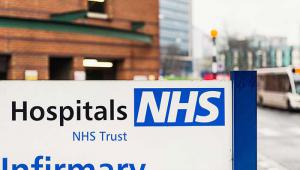From next month, all NHS providers will be formally categorised by the health regulator on the quantity and intensity of improvement support they may need.
All providers will be classified under one of four categories and an initial ‘shadow’ segmentation was published on Friday:
- maximum autonomy (35 providers);
- targeted support (106 providers);
- mandated support for significant concerns (74 providers);
- special measures (22 providers)
According to these shadow ratings, 141 (60%) providers were in the two top categories – indicating they need less support – which left 97 (40%) in the bottom two. The rating is based on performance and other recent insights.
However, in terms of acute trusts, two thirds (80 out of 137) were in the bottom two categories.
This is the first time the provider sector has been rated in this way. It is hoped it will enable NHS Improvement to identify problems within organisations more quickly and offer more proactive support. Also, trusts in the top category will be encouraged to share best practice with other organisations, and provide support where possible.
The new categorisation system is part of the Single Oversight Framework, published by NHS Improvement last month. Under the framework, the watchdog will assess the needs of a provider based on: quality of care; finance and use of resources; operational performance; leadership and improvement capability; and strategic change.
Ben Dyson, executive director of strategy at NHS Improvement, acknowledged that all providers wanted to perform well and improve services for patients.
He said: “Our ambition is to make sure they are able to access the right support at the right time to drive continuous improvements. We also want to provide more space and autonomy for those NHS providers performing well and promote greater peer-to-peer support across the provider sector.”
Amber Davenport, NHS Providers’ head of policy hailed the framework. She said it offered “a more coordinated approach to measuring NHS providers' performance and targeting the improvement support they need”.
She also welcomed the way NHS Improvement engaged with providers to establish the shadow segmentation, and noted the framework marked a significant shift for the regulator, in terms of placing more emphasis on improvement and support.
However, despite the good news that more than half of providers were in the top two segments, she said the ratings revealed the challenges faced by the acute sector.
“What the figures do lay bare…is the enormous pressure the acute sector is facing, with almost two thirds of these trusts – 80 out of 137 – falling in segments 3 and 4,” she said.
It was, she said, “difficult to separate the segmentation from the difficult context in which providers are operating… one of increasingly challenged finances, a social care system that has now reached a tipping point and rapidly rising demand”.




















